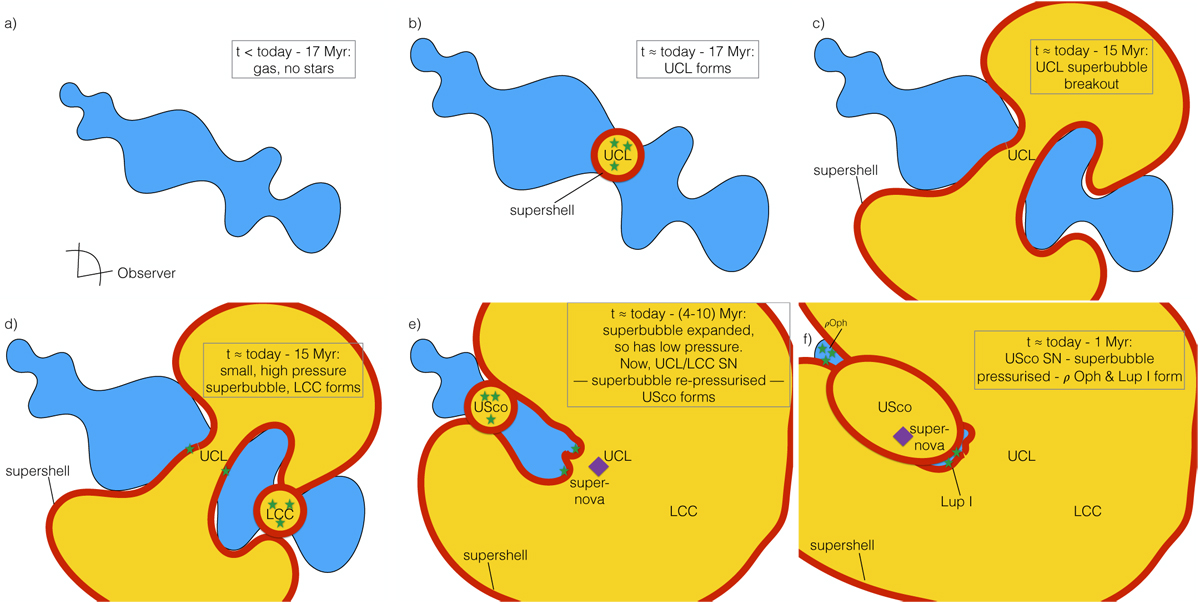Fig. 11

Sketch of the evolutionary scenario on the basis of the results of the present study. Panel a: before 17 Myr ago – the elongated gas cloud in Sco–Cen has not yet formed any stars. Panel b: 17 Myr ago – something causes the onset of star formation in UCL. A superbubble forms. Panel c: 15 Myr ago – the superbubble has expanded beyond the scale height of the gas stream. It now expands quickly into more tenuous regions, but cannot penetrate into the dense clumps in the parent cloud. Panel d: 15 Myr ago – star formation starts in LCC. This could be spontaneous, or be enabled by compression by the UCL superbubble or a supernova in a more distant, older member of the elongated cloud/star cluster system. Panel e: 4–10 Myr ago – supernovae pressurise the superbubble and squash the surrounded part of the parent cloud. Star formation sets in at USco. Winds from USco then sweep up the rest of the cloud. Panel f: 1 Myr ago – a supernova in USco pressurises the superbubbleand its rim once again. Rho Ophiuchus and Lupus I begin star formation.
Current usage metrics show cumulative count of Article Views (full-text article views including HTML views, PDF and ePub downloads, according to the available data) and Abstracts Views on Vision4Press platform.
Data correspond to usage on the plateform after 2015. The current usage metrics is available 48-96 hours after online publication and is updated daily on week days.
Initial download of the metrics may take a while.


